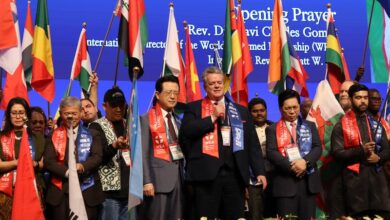Australian authorities have determined that 200 fires have been deliberately set and warned the nation’s residents to prepare for another wave of evacuations. The news comes as temperatures in the country’s southeast rise to normal levels after a days-long cool spell, bringing the danger of revitalized blazes.
But as news media and Hollywood actors are quick to blame it on “global warming,” some scientists are relying on science and data for the true cause.
Leading scientist and Australian fire management expert David Packham says that current bushfires have been caused by increased fuel loads (underbrush growth), not climate change, Packham is a past recipient of the Order of Australia and is a former Commonwealth Scientific and Industrial Research Organization (CSIRO) bushfire expert.

Packham warned Victoria’s Inspector-General for Emergency Management five years ago that “a massive bushfire disaster will occur” if the annual fuel reduction burning target of 5 percent was not doubled or tripled.
Fuel levels have since reached their most dangerous levels in thousands of years, Packham added.
Packham’s prediction has proven true as Australia grapples with massive bushfires across the country. Across six states, more than eight times the land has been burned than the 2018 California fires, reported the BBC.
READ: Climate change accord hurts world’s poor
In an interview with 2GB’s Jane Marwick in December 2018, Packham said he was surprised to hear former fire chiefs lay the blame for Australia’s devastating bushfires on climate change.
“Anybody who knows anything about the principles, and a little bit about the science of bushfire behavior, knows that that is not the case,” he said. “I can’t believe that they’re saying things that they didn’t believe just to push a semi-religious myth about climate change.”
According to Packham, fuel is the main component for a bushfire; the amount of fuel determines fire ferocity and the rate at which the fire moves. Other components include hot, dry, windy weather and ignitions.
“For example it is very hot and very dry, and sometimes very windy in the center of Australia. But there’s no fuel,” he said. “Occasionally there is fuel after a very good year when they have a lot of rain. The next year becomes a problem in the center of Australia, and huge fires take place there, because now at last there’s fuel.”
Burning is the most “economic way to control the fuel over the big areas of Australia,” which was “controlled beautifully by the original inhabitants of Australia” Packham added.
However, Associate Professor Philip Zylstra, from Wollongong University’s Center for Sustainable Ecosystem Solutions, told The Sydney Morning Herald that fuel loads and state government management were not responsible for the fires as “more [burning] has been done in the past decade than in many, many decades.”
Zylstra added that an increase in fuel load burning would instead blanket cities and towns with smoke and create “huge risks” of accidental property damage and mortality.
Packham told 2GB that traditional ways of burning did not involve “scorching the earth” but involved “trickling” little fires, such as over the surface, with no damage to tree crowns.
“You might do an area and might do say 70 percent of the area, so there’s 30 percent of the area where the bigger animals can just go back and sit until the fire has gone through,” he said.
NSW Rural Fire Service Commissioner Shane Fitzsimmons said on Jan. 8 that one impediment to hazard reduction burning was the weather.
He added that as the fire season lengthens, a “shrinking window of opportunity” exists for favorable burning periods. Fitzsimmons believes fuel burning to be “absolutely an important factor when it comes to fire management and managing fire in the landscape but it is not the panacea,” reported SBS News.
Last month, New South Wales Premier Gladys Berejiklian blamed arsonists, lightning strikes, unseasonably warm weather, downed power lines, car crashes, and prolonged drought as causes of the Australian fires, reported the Australian Associated Press.
On Jan. 7, the Victorian Aboriginal Heritage Council issued a statement asking Victorians to work with Indigenous Australians in bushfire management. “We must work together with all Victorians to ensure country management is sensitive and practicable,” chairperson Rodney Carter said.
Australian Prime Minister Scott Morrison said on Jan. 5 that he will meet all state leaders to discuss clearing more land and conducting more hazard reduction burns, which were “run and overseen entirely by state governments.”
Following are some notable news from the latest bushfire season in Australia:
- Prime Minister Scott Morrison was visiting the popular holiday destination Kangaroo Island, of which a third has been burned, where he is expected to announce a A$11 million relief package.
- Around 70 firefighters from the United States and Canada were due to land in Australia on Wednesday, joining scores of their compatriots already on the ground.
- In Victoria state, telecommunications company Telstra was working to reconnect several communities.
- Smoke from wildfires has drifted across the Pacific and affected cities in South America, and may have reached the Antarctic, the U.N. World Meteorological Organization said.
- There are 127 fires ablaze across NSW, with around 50 uncontained. All the fires were at the “advice” level, the lowest alert rating. Victoria state had 39 fires with 13 “watch and act” alerts.
- Prime Minister Scott Morrison has pledged A$2 billion ($1.37 billion) to a newly created National Bushfire Recovery Agency.
- More than 100 military personnel were being deployed to help with clean-up efforts across the state.
- Rural Fire Services Commissioner Fitzsimmons: “Hazard reduction burning is really challenging and the single biggest impediment to completing hazard reduction burning is the weather.”
–Wire Services







